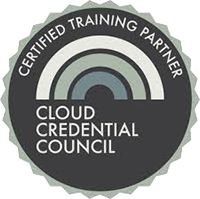ITIL Service Strategy Ensures Optimized Service Value for Your Customers
The digital age has increased the reach of businesses. Now, organizations must be cognizant of their local as well as global competitors. As discussed in, ITSM Determines the Fate of Your Organization, Information Technology Service Management (ITSM) is a strategic approach that is paramount to the design, delivery, management, and enhanced-use of Information Technology (IT) within an organization. A large component of the successful implementation of ITSM, is the assurance that the right people, with the right skill sets to administer the proper technology and implement efficient processes, are implementing optimal service strategy. The ultimate goal of an organization is to provision more useful services and to provide better support to end users.
The Information Technology Infrastructure Library (ITIL) Service Strategy is a market-driven approach designed to help individuals adhere to the best IT service management practices. Through ITIL training, employees can be better equipped to help focus the organization’s business efforts on providing, delivering, and support services, as well as products, that their customers need. Implementing five processes within the ITIL Service Strategy lifecycle phase (Business Relationship Management, Strategy Management for IT Services, Service Portfolio Management, Demand Management, and Financial Management) organizations are better equipped to work collaboratively to reach strategic decisions that positively influence their IT services and provide added value.
What Is Business Relationship Management?
ITIL business relationship management focuses on providing the intelligence needed to inform the strategy and service selection for a specific portfolio, so that the chosen IT solution can be more easily implemented for the chosen customer. Through this management tactic, organizations can form better relationships with customers by more aptly understanding the customer’s needs and service requests. In short, organizations must ensure that provided services are delivering the value that the customer expects, while also offering viable solutions to risk management and potential service issues. By measuring and responding to customer satisfaction levels, organizations can more easily meet established Key Performance Indicators (KPIs).
What Is Strategy Management For IT Services?
As the name suggests, ITIL strategy management for IT services enables the transformation of IT Service Management Services into a strategic asset. To meet this goal, Strategy management for IT services must work closely with the service portfolio management and business relationship management teams to create an environment of continuous improvement. As a general rule of thumb, Strategy management for IT services will help organizations answer the following questions:
- Who are our customers?
- What business outcomes do our customers require?
- How do the services we provide support the established business outcomes?
- How can we position ourselves to be the best logical provider of these IT services?
- How can we resolve any unmet needs in our current market spaces?
- How can we expand our current service offerings into new markets?
What Is Service Portfolio Management?
Service portfolio management helps to evaluate new services or proposed changes to existing services. This intuitive management process monitors IT services as they proceed through the various stages of funding, design, development, testing, and deployment. The goal of service portfolio management is to ensure that all current and future services are properly aligned with the vision and established goals of the organization, so that the optimal returns can be achieved on all services.
What Is Demand Management?
ITIL demand management should be leveraged by organizations to better understand and predict customer demands for services. To best meet these needs, ITIL demand management requires organizations to analyze the Patterns of Business Activity (PBAs) that dictate a customer’s growing or shrinking demand for services. Additional factors that should be analyzed include: the source of the demand, special customer needs, and the customer’s tolerance for delay. Once these factors have been considered, then User Profiles (UPs) should be created for each type of customer, so that demand management is optimized for efficiency, effectiveness, and Return on Investment (ROI).
What Is Financial Management For IT Service?
Financial management for IT services focuses on the proper tracking of the spending and total IT investment that is made for each service that is provided. Accounting, budgeting, and charging are the three main components that should be tracked for each IT service.
- Accounting should answer: what does it cost to provide each service?
- Budgeting should answer: will the IT Service Management have the adequate funding needed to successfully deliver the promised services?
- Charging should answer: what is the provided “value” of the service, and will the consumers of the services be made aware of the organization’s cost for providing the services to them?
How Does The Cumulative ITIL Service Strategy Lead To A More Competitive Business?
As outlined above, the five processes within ITIL Service Strategy work together with one common goal — to make an organization more competitive. Each process of ITIL Service Strategy is designed to support the executive objectives of the business. In this vein, this service-driven strategic approach directly supports the goals of a successful ITSM process.
A business’ implementation of an ITSM process can help the organization complete boardroom objectives, achieve key priorities, and meet business milestones across multiple silos. ITIL Service Strategy supports these goals by aligning business objectives throughout the organization. From the shareholders’ perspective to the financial decisions and business direction, ITIL Service Strategy provides a cohesive management approach that can help organizations more easily implement a goal-oriented and ROI-generating ITSM process.





